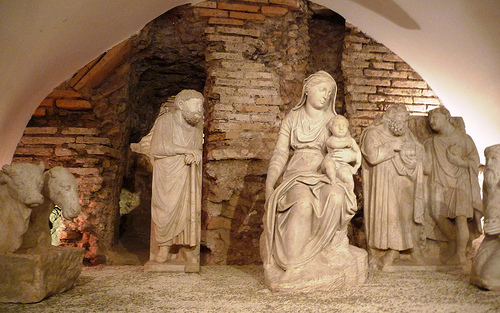The tradition of placing nativity scenes in churches and Christian homes at Christmas is now widespread.as a way to honor the Child God who is born and to enter into the Mystery. The simplicity of the scene in which St. Joseph and Mary, accompanied by a few shepherds, live the birth of God allows infinite interpretations. That is why throughout history multiple styles of nativity scenes have been developed, according to the time and customs of each place.

Nativity scene that decorates the Granda store this Christmas.
THE ORIGIN OF THE NATIVITY SCENE TRADITION
Already in the catacombs, the early Christians They must have made their own figures, as remains of nativity scenes have been found, albeit very rudimentary. St. Francis of Assisi is the saint considered the driving force behind this tradition. Faced with the illiteracy of the society of his time, the saint, authorized by Pope Honorius III, resorted to a living representation of Jesus in the manger to explain Christmas to those he was evangelizing.
In the year 1290, the architect Arnolfo di Cambio made a nativity scene with figures, which is considered the first nativity scene as we know it today.

Nativity scene made by Arnolfo di Cambio
It was not until the 16th century that the tradition of placing nativity scenes in churches during Christmas spread, following the Council of Trent. Gradually it spread among Christian families and began to be placed in homes. Thus, different styles and ways of seeing the Nativity scene were created until our days, in which we find a great diversity of them.
THE CRIB OF THE LITTLE LAMB
This Nativity Scene, designed and made in our workshops is called "Nativity Scene of the little lamb". The name is due to the detail of the little animal, that near the cradle tries to take the sheets from the Child.
This nativity scene can be purchased in our online store either made of resin with ivory finish, or made of resin with polychrome finish.
This Christmas the Vodudahue Chiloé Church has placed for the first time a crib of the little lamb of large dimensions. The figures, one meter high, have been carved in solid cedar wood, then polychromed with faint glazes of color, which reveal the veins of the wood.
